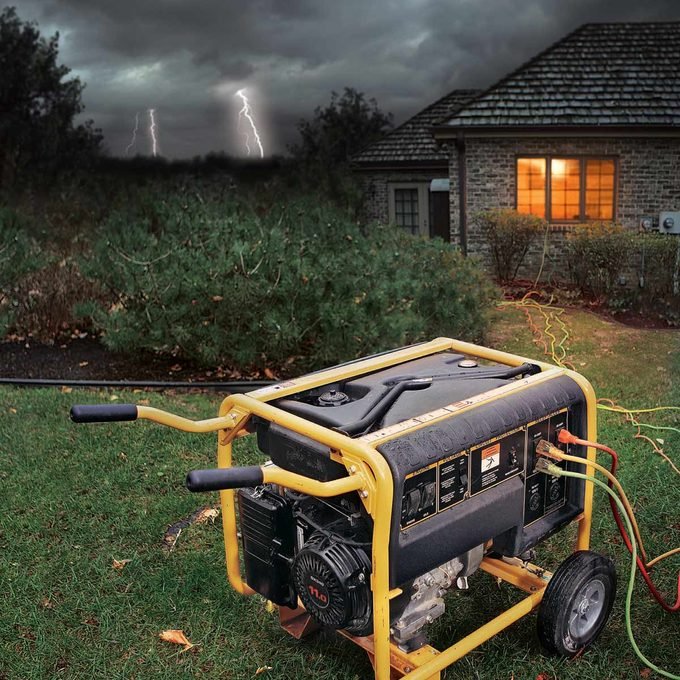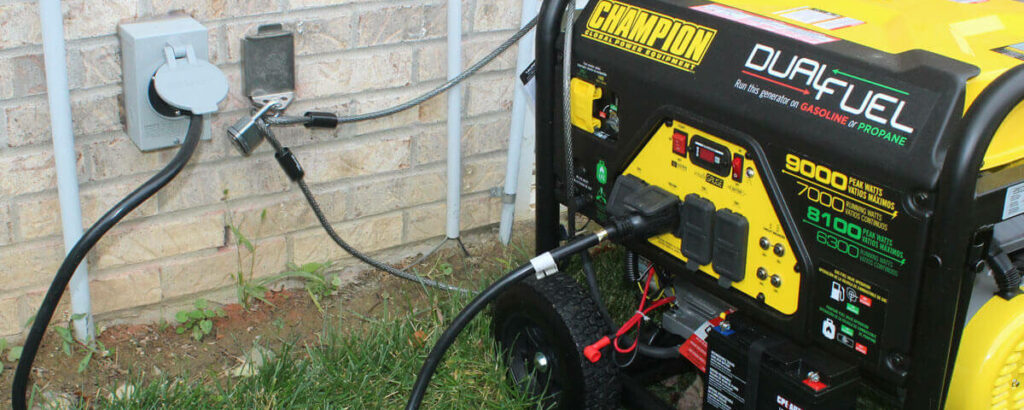You not only need to know how to operate your generator but also learn life-saving tips. And please read because: You might
- Save lives here or protect yourself from electrocution
- Get mind-blowing tips on how to keep your generator grounded throughout the storm
Before it is too late, you need to nip it in the bud.
How to Hook Up a Generator?
 The craze to light a house on a generator after a power outage can be deadly when you care less. Strive to prioritize your safety, health, and wellbeing. If you care about your safety, take caution, and do not just breeze through simple structures. Ensure your house is safe from carbon monoxide.
The craze to light a house on a generator after a power outage can be deadly when you care less. Strive to prioritize your safety, health, and wellbeing. If you care about your safety, take caution, and do not just breeze through simple structures. Ensure your house is safe from carbon monoxide.
To make our showdown clear, we followed guidelines from:
- Local code construction policies
- Power supply authorities
- Manufacturer’s instructions
- National Fire Protection Association
Our goal is to help you prevent the hazards. Rather than just waiting for the condition to escalate, try our best suggestions below.
First, we would like to delve into the factors to consider when constructing a perfect site.
Away From the House
We are conscious of the 15 feet house-generator rule. Over 70 percent of deaths caused by Superstorm Candy resulted from inhaling carbon monoxide from generators operated from garages and enclosed spaces. Hey! No need to panic. So, during a storm, gusts of wind can bring poisonous fumes into your house.
Safety for the Extension Cords
Storms interfere with the cables and extension cords. The wires might disappear, leaving you in the gloom. If you are using old cables, ask your electrician to install newer ones to have a stronger connection.
Do not be sucker-punched by mother nature. Ready? I am going to make this quick and painless for you!
Just before going on:
If you are uncertain of how to mount your machine, seek help from a professional who is aware of your local building codes.
3 Best Places to Keep Generators During a Storm
The key is this: find a safe location and fix your generator in line with the Consumer Product Safety Commission. Think about how useful power is in your house. Do you need to favor storms in place of your generator? Most generator sellers hike the prices when storms approach. You do not want to feel gamed by just feeling lazy to set up a single permanent powerhouse.
A perfect shelter for your generator must have these three requirements:
- Permitting enough airflow
- Resist fire
- Free from water
But for a shelter to withstand stormy conditions, it must be strong enough to beat the storm.
If you would like to say farewell to losses, then read these nuggets that you can adopt.
1. On a Concrete Pad
A storm is usually violent and has strong winds and rain. Powerful storms have speeds of 150 mph. Smaller storms can have dangerous wind gusts that can pull out power sources, so if you depend on power lines, you are lucky that no storms hit you. Attaching your generator firmly will make you feel fewer fireworks going off your face, however bold the storm is.
Small generators or magnetos do not require permanent installations because they are portable. If you own a big generator, it might require complex installations. It stays on a permanent pad and is connected to gas throughout.
2. In a Ventilated House
If you have an external canopy-like structure a few meters away from your main house, then that would be a favorite spot. Generators should be away from your house, garage, doors, or windows. Ensure it operates on a dry surface to avoid moisture. Install wires firm enough to resist the storm.
Your structure should be in a location that blows away from your home. As aforementioned, exhaust fumes are poisonous and can be fatal. Mind its windows so that exhaust fumes do not build up, leading to insufficient air into the generator.
3. In DIY Generator Shelters
A GenTent shelter can cover your generator against rain and even protect it from gale-force winds. Do not be tempted to operate it in a vehicle – even if its doors are open, whether a truck, trailer, garage, or a house. Shelters should be box-like so that the generator has protection from all its sides.
Why You Need to Care For Your Generators During Storm
 I like how you are curious. I got your back. These are the reasons for anyone who needs them.
I like how you are curious. I got your back. These are the reasons for anyone who needs them.
- Generator shelters on a suitable spot protect it against storm puddles from all sides.
- Violent storms might cut the airflow that can make it hot up and turn off. If it shuts down, it sucks oxygen, leaving more CO concentration, which can be fatal to anyone who draws close to it.
- Safe shelters away from your house protect you in case of fire or poisonous toxic exhaust.
Generators can be dangerous if mishandled. Although they might still operate in the rain, avoid running them unless they are enclosed. Always fit them on a flat and dry surface. Never touch them with wet hands.
Conclusion
The best place to keep generators during a storm should be waterproof, firm, and have enough airflow. Generator covers are not good, so avoid them during storms. We advise a firm shelter or a strong GenTent.
The chances are that you will need a professional to help you site your generator. Sometimes, you may think of getting a site near your power source to cut installation costs. If you can, then do it if you won’t bend the conditions. Besides, by properly setting your generator during a storm, you are saving your life, your family and getting yourself a comfortable and nonchalant rest during the storm.
As you prepare for the storm, make sure you load enough oil and fuel for your generator. Take heed of your generator’s alerts, and act in case of an emergency. Finally, double-check your generator until you are confident of the power supply, no matter what.